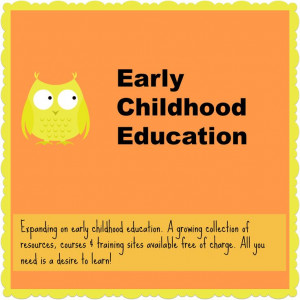Management Higher And Adult Training At OISE
For grownup learners looking to obtain their GED and the improved alternatives that observe, then the State of Georgia’s adult education programs may also help to prove that it’s a new day” for you.
Grasp’s degress are particularly helpful in areas the place it may well differentiate yoursef from the group and display business managers that you’re wanting to proceed the extra mile and enhance your self to get forward of the pack. Grasp’s qualifications are good prolonged learning strategies since you gain very targeted data in your selected space and turn out to be knowledgeable in your subject.
Any passages the place you go flawed need extra work on them. It’s best to start simply before the problem space and stick with it by means of to the subsequent part. In the event you do this you will quickly eradicate the problem areas. Practising is like hacking your manner … Read more
 Kids like to play, and it could only make sense that they’d study best doing what they love most. Even the disrespectful, dimwitted zoo visitor that makes jokes concerning the animals and will get upset that a sure animal is just not seen on a regular basis nonetheless has to pay admission that will assist conservation efforts economically. While not everybody will profit to the identical extent of another, or in any respect, the percentage of people that do still depend.
Kids like to play, and it could only make sense that they’d study best doing what they love most. Even the disrespectful, dimwitted zoo visitor that makes jokes concerning the animals and will get upset that a sure animal is just not seen on a regular basis nonetheless has to pay admission that will assist conservation efforts economically. While not everybody will profit to the identical extent of another, or in any respect, the percentage of people that do still depend. Education is now going by means of a profound change in the way in which it operates. As soon as faculty has began discuss to your child. Ask him how college goes? Do you just like the lecturers? Have you ever made buddies? Your kid’s responses gives you an indication of how the school is working out. Additionally, watch your kid’s conduct. Typically a baby’s behavior changes mildly after being launched into a brand new group of children and environment. This is nothing that an excellent dwelling life and parenting cannot handle rapidly though. The only cause for concern is drastic unfavourable habits changes. If this is the case you could need to talk to your baby extra severely about what has been occurring in school and have a session with the teacher. Normally youngsters are good with change and adapt easily.
Education is now going by means of a profound change in the way in which it operates. As soon as faculty has began discuss to your child. Ask him how college goes? Do you just like the lecturers? Have you ever made buddies? Your kid’s responses gives you an indication of how the school is working out. Additionally, watch your kid’s conduct. Typically a baby’s behavior changes mildly after being launched into a brand new group of children and environment. This is nothing that an excellent dwelling life and parenting cannot handle rapidly though. The only cause for concern is drastic unfavourable habits changes. If this is the case you could need to talk to your baby extra severely about what has been occurring in school and have a session with the teacher. Normally youngsters are good with change and adapt easily. Early childhood training mentorship is aimed at the practitioners. Discover out extra on why abacus training is increasingly in style in many international locations like Malaysia, the United States, the United Kingdom, Australia, Canada, India, Singapore and elsewhere. The abacus has turn into helpful educating tool in schools, tuition centers and neighborhood facilities, and is used by home education parents around the world.
Early childhood training mentorship is aimed at the practitioners. Discover out extra on why abacus training is increasingly in style in many international locations like Malaysia, the United States, the United Kingdom, Australia, Canada, India, Singapore and elsewhere. The abacus has turn into helpful educating tool in schools, tuition centers and neighborhood facilities, and is used by home education parents around the world.